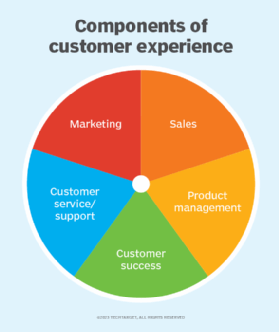
Getty Images/iStockphoto
8 challenges customer success teams face
Effective customer success improves retention and growth, but many teams struggle to understand customers' goals, create a smooth onboarding process and align with sales teams.
In a subscription-based and relationship-focused economy, real growth requires organizations to engage, support and retain customers year after year.
Customer success teams prove their value in customer retention and loyalty. They increase adoption, offer support, reduce churn and create opportunities for business expansion. Yet, customer success leaders face a consistent set of hurdles that can stall momentum and hurt the organization's bottom line.
Common customer success challenges include the following:
- Not knowing customers' goals.
- Ineffective onboarding.
- Limited financial resources.
- Loss of personalization when scaling.
- Lack of alignment across departments.
- Burnout and role overload.
- Lack of predictive intervention.
- Using the wrong metrics.
Many organizations fail to address these challenges effectively. Explore eight of the most common customer success challenges and actionable strategies to increase retention.
1. Not knowing customers' goals
Sales reps often learn about customers' goals during the sales process. However, brands that rush the handoff process between sales and customer success can lose sight of these objectives. Some organizations also lack a structured discovery process, which helps a sales rep learn about a potential customer's goals and challenges.
Why it happens: A lack of understanding around customers' goals occurs when sales and customer success teams fail to consistently conduct discovery processes. It can also happen if teams haven't established a central process to track and update goals as they evolve over time. Additionally, sales teams frequently forget or lack the time to document customer priorities, which forces customer success managers to learn about customers' goals from scratch.
How it affects the organization: If brands don't understand customers' goals, customers might disengage, struggle to see how the product benefits them and fail to achieve their desired outcomes. This misalignment increases customer churn and negatively affects revenue growth.
How to prevent it: Customer success teams can create a success planning framework that starts during presales and continues through the customer lifecycle. This framework can include quarterly business reviews, participation across departments and processes to store and update goals in CRM systems.

2. Ineffective onboarding
Confusing onboarding processes can frustrate users, lead to early attrition and negatively affect customer success metrics.
Why it happens: Customer success teams often design onboarding with a one-size-fits-all approach that ignores customers' role-based needs. Additionally, they might struggle to keep product documentation up to date, lack automation or offer automation that is too rigid to handle unique user scenarios.
How it affects the organization: Ineffective onboarding processes delay a product's time to value for the customer, reduce adoption rates and increase customer churn.
How to prevent it: Customer success leaders can balance general onboarding milestones, such as completing setup, with role-specific steps. They can also deploy self-service guides and tutorials for low-value accounts -- those that don't generate significant revenue -- and live check-ins for high-value customers, which generate a lot of revenue for the business. This strategy helps teams allocate their resources most effectively. Additionally, analytics tools can help teams monitor customers' feature adoption and trigger proactive outreach if usage dips.
3. Limited financial resources
C-suite executives sometimes view customer success as a department that doesn't offer ROI, which makes it a target for budget cuts. So, customer success teams often can't invest in tools, which can affect their ability to hit their KPI targets.
Why it happens: Many organizations don't understand the link between customer success activity and revenue. As a result, business leaders often view it as optional.
How it affects the organization: Underfunded teams can't effectively serve a growing customer base, invest in automation or offer personalized support. As a result, brands miss out on key renewals and upsell opportunities.
How to prevent it: Customer success leaders can present a data-driven business case that links customer success initiatives to KPIs like reduced churn, higher net revenue retention -- a metric that tracks how much recurring revenue a business retains from its customer base over a period -- or increased customer lifetime value. Additionally, they can use third-party research and internal success stories to reinforce the positive effect of customer success on revenue.
4. Loss of personalization when scaling
A customer success model that works for 20 accounts might fail at 200 unless the team creates processes to prioritize their most valuable customers.
Why it happens: As organizations grow, they often lack the tools to scale certain processes, like customer segmentation, automation and frameworks that identify and prioritize high-value accounts. Organizations often delay implementing these processes and tools due to their perceived complexity and high upfront costs.
How it affects the organization: Customer success managers who offer personalized and proactive outreach might struggle to keep up with the growing number of accounts. High-value accounts begin to receive little attention, and as a result, organizations miss opportunities for significant revenue growth.
How to prevent it: Customer success leaders can implement account tiering based on customers' revenue potential and complexity. They can offer frequent and personalized engagement for top-tier customers and self-service tools for others. Additionally, they can automate health score tracking, renewal reminders and onboarding for lower-value accounts.
5. Lack of alignment across departments
Customer success shouldn't happen in a silo, but it often does. In siloes, teams cannot share valuable data or understand customer pain points across the full customer lifecycle.
Why it happens: Sales, product and support teams can all work together toward a set of shared goals. However, they often chase different KPIs, work in separate systems and rarely share customer insights in real time.
How it affects the organization: Lack of alignment across departments causes conflicting messages for customers, delays issue resolution and wastes opportunities for upsells and product feedback.
How to prevent it: Customer success, support, product and sales teams can establish shared goals, such as churn reduction or adoption targets, and hold regular meetings with each other. Additionally, product teams should give customer success leaders a voice in product roadmap discussions to let customer needs shape product priorities.
6. Burnout and role overload
The modern customer success manager juggles various tasks, like onboarding, training, renewals and escalation management -- often with too many accounts to handle effectively. As a result, many customer success departments struggle with burnout, turnover and inconsistent qualities of customer engagement.
Why it happens: A lack of clear role definitions and under-resourcing can force customer success teams to take on tasks outside of their core responsibilities.
How it affects the organization: The common challenges, like burnout and turnover, negatively affect customer success teams' outcomes, such as customer satisfaction and retention.
How to prevent it: Customer success leaders can define roles and set clear responsibilities for each team member. They should also set realistic account loads for customer success managers -- typically 20 to 50 for high-value accounts or over 100 for low-value accounts. However, the right number can vary between organizations and depends on product complexity and customer needs. Additionally, leaders can adopt automation tools for repetitive tasks like check-ins or survey distribution and recognize and reward contributions to keep morale high.
7. Lack of predictive intervention
By the time customers formally indicate they plan to leave, customer success teams usually don't have enough time to convince them to stay.
Why it happens: Many customer success teams lack analytics tools or proactive processes, such as frequent customer health score checks and feedback surveys, to interpret early warning signs.
How it affects the organization: A reactive approach leads to lost revenue, unpredictable renewals and potential damage to the brand's reputation.
How to prevent it: Customer success teams can implement customer health score models based on product usage, engagement frequency and sentiment analysis. Additionally, they can combine the models with proactive churn prevention strategies -- such as regular check-ins and frequent offers -- to trigger personalized outreach as risk indicators appear.
8. Using the wrong metrics
Customer success teams often track a wide range of data, so they must track key metrics to achieve results.
Why it happens: Teams often focus on activity-based metrics, such as calls made and tickets closed. Yet metrics focused on outcomes, like renewals, expansions and advocacy, can more accurately measure a customer success team's effect on revenue and retention.
How it affects the organization: Customer success teams that focus too much on activity metrics lack an accurate way to track the outcomes that matter most, such as retention and revenue. As a result, organizations can struggle to pinpoint which customer success activities offer the most ROI.
How to prevent it: Customer success leaders can identify a small set of indicators that reflect customer health, like time-to-value, product adoption depth and executive engagement, then report on them regularly and link them to business outcomes.
Customer success demands proactive action, not reactive responses. Customer success leaders can address key challenges, such as not knowing customers' goals and a lack of predictive action, to create a repeatable framework for retention and growth. In a subscription-based economy that thrives on renewals, organizations must overcome customer success challenges to survive.
Robert Peledie is an enterprise architect, solution architect and director of CRM consultancy 365Knowledge Ltd. He has several years of consulting experience in global organizations.







